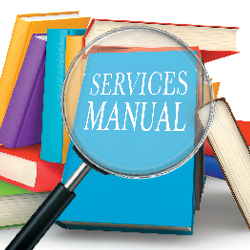|
REGISTRATION REQUIRED
exhibiting 101
 Measuring Up
When it comes to proving the value of your exhibiting program, there's more to measure than simple lead counts. Here are five metrics worth tracking. By Betsy Earle
Trade shows are typically the most scrutinized part of a marketing program because they're not only one of the biggest line items in the budget but also challenging to measure when it comes to bottom-line results. Unfortunately, too many companies don't have systems in place to tie a sale back to a lead gathered on a show floor. And while those in the C-suite often think of the lead count as the be-all and end-all trade show metric, it's certainly not the only means by which face-to-face marketers can gauge their success. Exhibits offer numerous ways through which you can engage your clients and prospects. As such, there are scores of metrics that can indicate whether your endeavors are hitting or missing their marks in regard to targets less ubiquitous than badge scans.
Now that face-to-face events are resuming after a year of COVID-induced hiatus – and many marketers' budgets are still on shaky ground – this is the perfect time to reassess how you track your program's performance. Here are a handful of metrics that often escape attention but can go a long way toward showing upper management just how impactful and valuable your efforts are. Social-Media Impressions ➤ Why it matters: Business-to-business marketers go back and forth as to whether social-media buzz matters, but the fact is customers of every stripe are looking to engage with the brands they buy from. As events transition back to live trade show floors, we will likely see more opportunities for hybrid engagement, i.e., interacting with both in-person and virtual attendees. And maintaining an active presence on social media is a key way to do just that, as well as promote your brand and increase awareness of your show-floor presence, product demos, and other in-booth activities. For example, a short product demo may be seen by an audience of a few dozen booth visitors. But a video of that demo posted to Facebook, Twitter, or LinkedIn with the appropriate hashtags could be seen by thousands. ➤ How to track it: Measuring views, "likes," and new followers is a great place to start. Most social-media platforms offer you an insights panel that shows you performance data about your content, such as the number of impressions, engagements, click-thru rates, etc. And depending on the platform, these panels may also offer data about your audience, e.g., their geographic location. By digging into this information, you're extracting both quantitative numbers that you can compare show to show and qualitative details about your customer's persona. You can also note what types of posts perform the best. For instance, perhaps a narrated tour of your exhibit generates a lot of interest, but a simple "Check us out at Booth #549" post barely generates a ripple. After that, work with your marketing team to determine what those numbers mean to you and if you're able to generate landing pages that convert or allow people to subscribe for more information. Number of Live Demonstrations ➤ Why it matters: Engagement with your product or service educates your potential customers and gives you the opportunity to create a memorable experience for attendees. Static displays are unlikely to perform as well as interactive activations. Have you ever walked through a Costco or Sam's Club, tried a free sample of the latest chocolate-covered almonds, and then found yourself with a cartful of them? With each attendee who takes part in a demonstration, you're increasing your brand's mindshare and the possibility that this booth visitor will become a customer. This also serves as empirical proof that you've secured a potential client's undivided attention. Has an email blast or direct mailer ever been able to claim the same? ➤ How to track it: Exhibitors with robust programs and lead-retrieval systems can incorporate a badge scan at the start of each demo and then generate a report showing how many were conducted – and, even better from a follow-up standpoint, with whom. If your tech setup is a bit more modest, consider having reps keep a tally either on paper or with a mobile device. At the end of the show, calculate how many demos were given on each day of the event and include the figure in your report. Visits From Current Customers ➤ Why it matters: Many exhibitors don't put a lot of emphasis on current customers visiting their booths because it doesn't feel like a new sale or growth. But keeping current customers costs significantly less than finding new ones, and expanding opportunities with your existing clients is the lowest of the low-hanging fruit. Also, consider the broader savings for your company. If a longtime client visits your exhibit, it's now possible that a regional rep won't need to drive or fly to make a sales call, take the customer to lunch, stay in a hotel, etc. Why wouldn't you want to brag about that? ➤ How to track it: If your lead-retrieval system offers a space for customizable qualifiers, be sure to add the option "Are you a current customer?" This gives you a way to easily extract these contacts during the event – and save you the embarrassment of sending them an email implying that they have no relationship with you. In your post-show report, indicate how many existing clients you were able to enjoy some face time with and describe any notable encounters. Media Value ➤ Why it matters: Media exposure is great for your company, and there are a number of ways it can be captured at a trade show. Perhaps a journalist or blogger visits your booth, learns about your new product, and writes an article that then appears in print or online. Maybe a reporter covering the show interviews one of your executives who is then prominently quoted in an industry-trend piece. If the event focuses heavily on consumer goods (e.g., cars, electronics, toys, pet supplies, etc.), there's also the chance of regional or national TV coverage. Bottom line: Editorial coverage, be it in print, online, or over the airwaves, can vastly expand the number of people acquainted with your brand, product, and/or service. What's more, such coverage adds perceived credibility, as your product or service is now "approved" by a media outlet that likely has the trust of its audience. ➤ How to track it: Any public-relations pro will tell you this is a thorny topic with many competing theories and formulas. For the sake of simplicity, I recommend using the Advertising Value Equivalency (AVE) method. Say your new product gets written up in a print publication, and the blurb is roughly a quarter of a page long. Visit the publication's website, search for the media kit or "Advertise With Us" page, and determine how much an ad that size would cost. Take that figure and triple it, as the PR rule of thumb is that editorial coverage has three times the value of an ad. So if a quarter-page advertisement in this hypothetical magazine costs $8,000, your article is valued at $24,000 – and you didn't have to spend a dime. A similar method can be applied to TV and digital media, although the process is a bit more complicated. A web search for "how to calculate the value of media coverage" will turn up numerous resources that can walk you through the necessary steps. Soft Savings ➤ Why it matters: Soft savings are what you manage to shave off of list prices. For example, let's say the sticker price of a sponsorship was $15,000, but you worked with your show rep and negotiated it down to $12,000. Or perhaps you ensured that you met all of the early bird discounts for your show orders and saved 30 percent off the regular rates. These dollars shouldn't go unreported, as this metric, perhaps more than any other in this column, confirms and validates your acumen as a face-to-face marketing professional and may – well, let's make it "should" – earn you a cushier seat at the management table. ➤ How to track it: During the course of planning for a show, keep a record of every order that includes savings resulting from your ability to plan ahead and/or your relationships with vendors and show officials. List these dollar amounts individually in your show report (e.g., money saved on a booth contract, electrical order, sponsorship, etc.) to showcase the scope of your attention to the bottom line, and also include a grand total. One final note when it comes to metrics: Please remember that coming up short of what you hoped to achieve doesn't mean you failed. You've still gained quantifiable information that can help you as you move forward. We can't meet all of our goals all of the time, but we can learn along the way and continually improve our effectiveness. E  Betsy Earle, CTSM
Betsy Earle, CTSMmanaging director and founder of Event Driven Solutions LLC. Earle obtained her MBA at the University of Miami and earned her Diamond-level CTSM designation in 2018. Exhibiting101@exhibitormagazine.com
|
|
|
||||||||||||||||||||||||||||
|
|
||||||||||||||||||||||||||||
|
TOPICS Measurement & Budgeting Planning & Execution Marketing & Promotion Events & Venues Personal & Career Exhibits & Experiences International Exhibiting Resources for Rookies Research & Resources |
MAGAZINE Subscribe Today! Renew Subscription Update Address Digital Downloads Newsletters Advertise |
FIND IT Exhibit Producers Products & Services All Companies Get Listed |
EXHIBITORLIVE Sessions Exhibit Hall Exhibit at the Show Registration |
ETRAK Sessions Certification F.A.Q. Registration |
EDUCATION WEEK Overview Sessions Hotel Registration |
CERTIFICATION The Program Steps to Certification Faculty and Staff Enroll in CTSM Submit Quiz Answers My CTSM |
AWARDS Exhibit Design Awards Portable/Modular Awards Corporate Event Awards Centers of Excellence |
NEWS Associations/Press Awards Company News International New Products People Shows & Events Venues & Destinations EXHIBITOR News |
||||||||||||||||||||
|
||||||||||||||||||||||||||||






